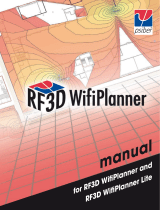Page is loading ...

Lath and Plaster
Application Note
Rev. 1.0 | 14-07-2020
Amina Technologies Limited
Cirrus House, Glebe Road, Huntingdon, Cambridgeshire, PE29 7DL, England
T: +44 (0) 1480 354390 | E: [email protected] | W: www.aminasound.com
Introduction
Lath and plaster is a building technique
used to finish interior walls and ceilings
consisting of narrow strips of wood (laths)
which are nailed across wall studs or ceil-
ing joists and then coated in plaster. It is
a more time consuming and expensive
technique compared to gypsum-based dry
lining and is now seldom (if ever) used in
new construction projects, but is still com-
monly found in listed and historic buidings
undergoing renovation.
Carefully remove lathe and plaster back to the
centre line of two adjoining rafters/studs in the
area the speaker is to be located. The approximate
location of studs can be found by using a metal
detector or a magnet to detect the nails securing
the laths to the studs. Studs are usually spaced 16”
(410mm) apart but are frequently found to vary, so
a small preliminary inspection hole can help to en-
sure accurate stud location. The length of removed
lathe and plaster should be approximately 300mm-
400mm longer than the speaker itself in total.
With the cutout made, ensure all cut lath ends are
tightly pinned to the rafters/studs, as unsecured
laths may be a source of unwanted noise. To do so,
remove a small amount of plaster from the periph-
ery of the hole to expose the lath ends.
Despite being an old technique, there are a number of reasons lath and plaster might be retained instead
of being replaced with more modern gypsum-based dry lining: Lath and plaster walls and ceilings are
heavier and thicker than standard gypsum counterparts, giving better sound isolation between rooms
and better thermal performance. Re-using existing construction and minimising waste is much more
ecologically friendly and in many cases there may indeed be conservation orders / listed status enforced
on properties with this type of construction which stipulates that the construction type must not be
changed.
Amina loudspeakers have been installed into lath and plaster walls countless times as there is clearly a
strong synergy between invisible speakers and historic properties where a period and/or authentic look
is desired or required. Through these installations we have refined the standard installation process to
optimize it for lathe and plaster applications.
Instructions Cut lath ends
Studs

Lath and Plaster
Application Note
Rev. 1.0 | 14-07-2020
Lath and Plaster
Application Note
Rev. 1.0 | 14-07-2020
Amina Technologies Limited
Cirrus House, Glebe Road, Huntingdon, Cambridgeshire, PE29 7DL, England
T: +44 (0) 1480 354390 | E: [email protected] | W: www.aminasound.com
Thoroughly clear the cavity of debris, then take the
opportunity to fill the cavity with insulation (Amina
recommends Innotherm) while it is fully accessible.
Then, insert noggins in both ends of the opening to
support the existing uncut lathes and a new plas-
terboard piece. Pin the laths securely to the nog-
gins.
Cut a new plasterboard piece to suit opening. Secure
to the exposed rafters/studs and the new noggins us-
ing suitable drywall screws with a maximum spacing
of 100mm apart. Ensure plasterboard is positioned so
it sits approximately 2mm back from the finished sur-
face of the existing lathe and plaster. You may need to
shim the plasterboard forward from the rafters using
an incompressible material.
From this point, follow the standard Amina instruc-
tions to install your cavity wall backbox and speak-
er within the new plasterboard piece. Don’t forget
to fill both the gap between speaker and plaster-
board and the gap between the new plasterboard
and old lath and plaster with a hard-setting joint-
ing compound (such as British Gypsum joint filler),
covering any exposed laths and allowing to fully
dry before the finishing layer is applied.
Finally, skim over the speaker and plasterboard using multi-finish or other finishing compound (Amina
recommend British Gypsum Easi-Fill), blending in to the existing plaster ceiling surface. Allow to dry fully
before decorating.
Noggin
Noggin
/




